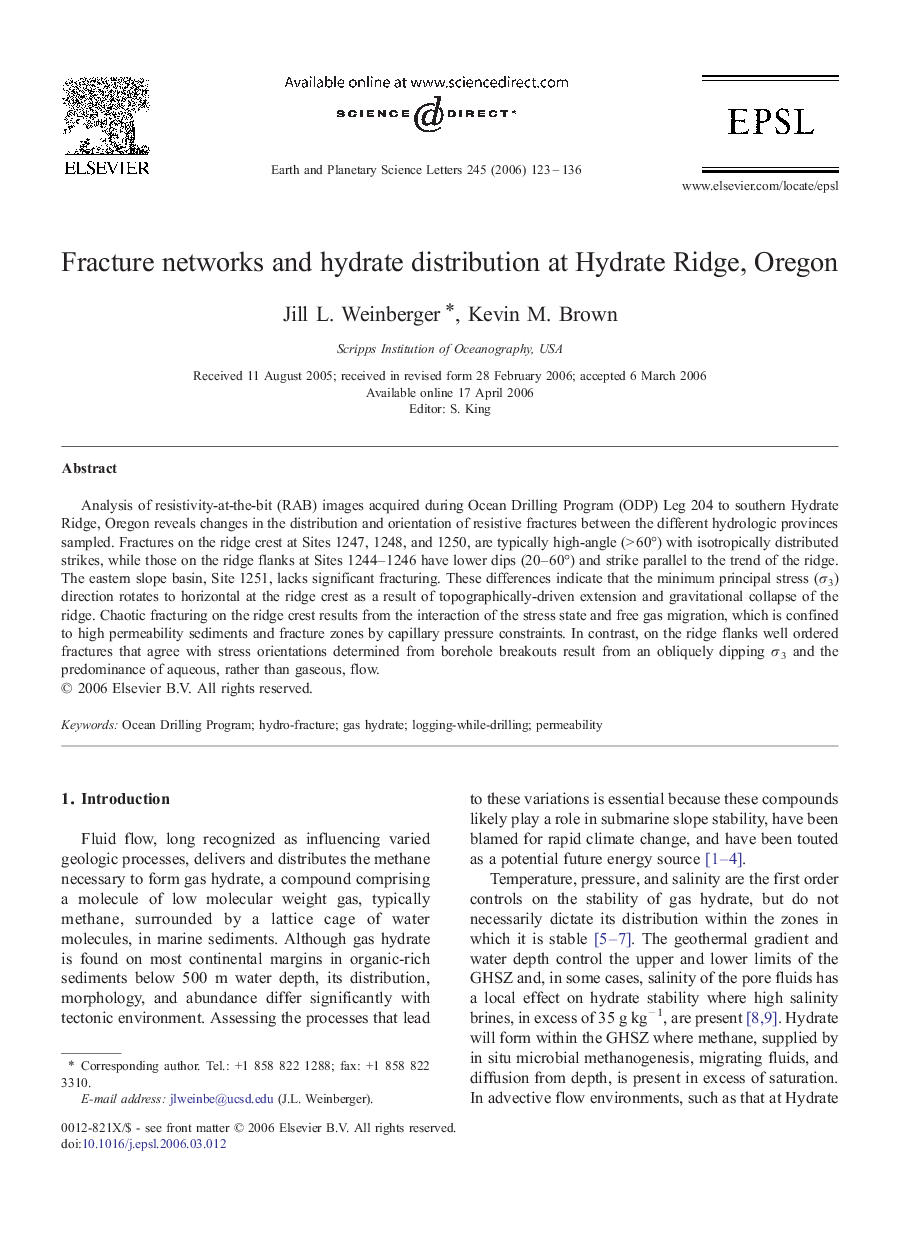| Article ID | Journal | Published Year | Pages | File Type |
|---|---|---|---|---|
| 4681100 | Earth and Planetary Science Letters | 2006 | 14 Pages |
Analysis of resistivity-at-the-bit (RAB) images acquired during Ocean Drilling Program (ODP) Leg 204 to southern Hydrate Ridge, Oregon reveals changes in the distribution and orientation of resistive fractures between the different hydrologic provinces sampled. Fractures on the ridge crest at Sites 1247, 1248, and 1250, are typically high-angle (> 60°) with isotropically distributed strikes, while those on the ridge flanks at Sites 1244–1246 have lower dips (20–60°) and strike parallel to the trend of the ridge. The eastern slope basin, Site 1251, lacks significant fracturing. These differences indicate that the minimum principal stress (σ3) direction rotates to horizontal at the ridge crest as a result of topographically-driven extension and gravitational collapse of the ridge. Chaotic fracturing on the ridge crest results from the interaction of the stress state and free gas migration, which is confined to high permeability sediments and fracture zones by capillary pressure constraints. In contrast, on the ridge flanks well ordered fractures that agree with stress orientations determined from borehole breakouts result from an obliquely dipping σ3 and the predominance of aqueous, rather than gaseous, flow.
